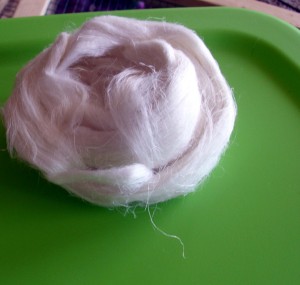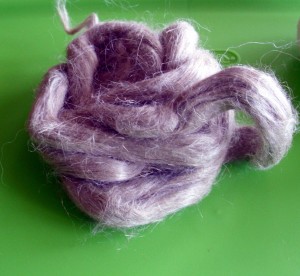Flax (also known as common flax or linseed) (binomial name: Linum usitatissimum) is a member of the genus Linum in the family Linaceae. It is native to the region extending from the eastern Mediterranean to India and was probably first domesticated in the Fertile Crescent.

Flax Flowers
Flax fibers are amongst the oldest fiber crops in the world. The use of flax for the production of linen goes back at least to ancient Egyptian times. Dyed flax fibers found in a cave in Dzudzuana (prehistoric Georgia) have been dated to 30,000 years ago.[17] Pictures on tombs and temple walls at Thebes depict flowering flax plants. The use of flax fiber in the manufacturing of cloth in northern Europe dates back to Neolithic times. In North America, flax was introduced by the Puritans. Currently most flax produced in the USA and Canada are seed flax types for the production of linseed oil or flax seeds for human nutrition.
Flax fiber is extracted from the bast or skin of the stem of the flax plant. Flax fiber is soft, lustrous and flexible; bundles of fiber have the appearance of blonde hair, hence the description “flaxen”. It is stronger than cotton fiber but less elastic. The best grades are used for linen fabrics such as damasks, lace and sheeting. Coarser grades are used for the manufacturing of twine and rope. Flax fiber is also a raw material for the high-quality paper industry for the use of printed banknotes and rolling paper for cigarettes and tea bags. Flax mills for spinning flaxen yarn were invented by John Kendrew and Thomas Porthouse of Darlington in 1787.

Flax Seed Capsules
Flax is harvested for fiber production after approximately 100 days, or a month after the plant flowers and two weeks after the seed capsules form. The base of the plant will begin to turn yellow. If the plant is still green the seed will not be useful, and the fiber will be underdeveloped. The fiber degrades once the plant is brown.
There are two ways to harvest flax, one involving mechanized equipment (combines), and a second method, more manual and targeted towards maximizing the fiber length.
First Method( mechanical): The mature plant is cut with mowing equipment, similar to hay harvesting, and raked into windrows. When dried sufficiently, a combine then harvests the seeds similar to wheat or oat harvesting. The amount of weeds in the straw affects its marketability, and this coupled with market prices determined whether the farmer chose to harvest the flax straw. If the flax was not harvested, it was typically burned, since the straw stalk is quite tough and decomposes slowly (i.e., not in a single season), and still being somewhat in a windrow from the harvesting process, the straw would often clog up tillage and planting equipment. It was common, in the flax growing regions of western Minnesota, to see the harvested flax straw (square) bale stacks start appearing every July, the size of some stacks being estimated at 10-15 yards wide by 50 or more yards long, and as tall as a two-story house.
Second Method (manual): The plant pulled up with the roots (not cut), so as to maximize the fiber length. After this, the flax is allowed to dry, the seeds are removed, and is then retted. Dependent upon climatic conditions, characteristics of the sown flax and fields, the flax remains on the ground between two weeks and two months for retting. As a result of alternating rain and the sun, an enzymatic action degrades the pectins which bind fibers to the straw. The farmers turn over the straw during retting to evenly rett the stalks. When the straw is retted and sufficiently dry, it is rolled up. It will then be stored by farmers before scutching to extract fibers.
Flax grown for seed is allowed to mature until the seed capsules are yellow and just starting to split; it is then harvested by combine harvester and dried to extract the seed.
Here are a couple pics of my flax spinning fiber. I got both bleached and unbleached to see how differently they will take dye.
I can’t wait to see how this dyes up.













Thanks for this info- I planted flax this spring, and was wondering when to pull it. The natural roving looks beautiful.
I looked into this for you. From what I’ve read it’s after 100 days or when the flax is between 60 cm and 1 meter.